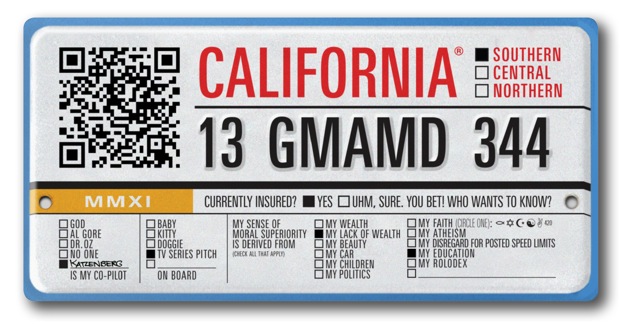 It’s Friday at lunch, and you know what that means–it is time to clear out the accumulated news chum links from the week that haven’t fit into any theme. There’s a bunch of interesting stuff in here, so read on, McDuff:
It’s Friday at lunch, and you know what that means–it is time to clear out the accumulated news chum links from the week that haven’t fit into any theme. There’s a bunch of interesting stuff in here, so read on, McDuff:
- Sending a Message. I’m sure many of you don’t remember what real letters, written between friends, are. You know: putting pen to paper, putting paper in an envelope, picking out an appropriate stamp, and putting it in the mail. Trust me–people actually used to do this. What’s more, at least according to a fascinating blogger post, the way that people positioned the stamps on the postcard or letter was used to convey hidden information. All sorts of variants were possible, with loads of ways to position the stamp… except for the message “This is only a stamp.”
- What the Surgeon Saw. I’m sure many of us, by now, have had some form of surgery. Ever wonder what happens while you are out? This fascinating book except from the WSJ provides the answer: a surgeon tells what happens during surgery. From the problems of dealing with obese patients, recalicrant instruments, or ghosts from the past–it is an interesting read. In a related article, for some, surgery may not be necessary. Science is starting to discover that placebos (fake treatments or medicine) can work wonders. It is not just medicine. The placebo effect can explain why we think diet foods taste bad or are less filling–simply because they are called “diet”. In fact, sometimes the placebo can be more effective than the intended treatment!
- Mapping it Out. If you know me at all, you’ll know I love maps. That’s one reason I found this article about the best American wall map fascinating. It has a level of detail and design decisions–all done by the cartographer, not the computer–that serve to amplifying the conveying of information. An interesting read.
- A Theme For Life. Kids today don’t know the joy of a good or great TV theme. I love them. The TV theme was the best thing about shows like “Space:1999” or “The Nanny”, and were often written or sung by great artists (the Smothers Brothers theme was by Mason Williams; the Beverly Hillbillies was by Flatt and Scruggs; and the Nanny theme was by Ann Hampton Callaway and sung with her sister). The LA Times knows this, and has been using their magazines to explore past themes. Their most recent looks at themes from 1990-2011; past articles have covered 1970-1989 and 1950-1969. You can even vote for your favorite.
- Good and Bad. To last times that are more related to the news from this week: one bad and one good. Let’s start with the “bad” first. I have a large concern about evangelicals in politics–far too often they want to legislate their morality as their god teaches it, forgetting religious freedom. An opinion piece from CNN highlights this well, talking about how Rick Santorum wants to imposed a religious based Christian law. Hint to the GOP: If you really want to win with a broad-based mandate, you’ve just got to stop running candidates that are bat-shit crazy. On the good side, there are good chances that the commuter transit reimbursement provisions (tax break) may be restored shortly.
Music: Cheapo-Cheapo Productions Present John Sebastian Live (John Sebastian): Waiting for a Train


 Today’s lunchtime news chum (the first in 2012) brings a collection of items all related to transit or transportation:
Today’s lunchtime news chum (the first in 2012) brings a collection of items all related to transit or transportation: From the “Getting Framed” Department: Fast Company has
From the “Getting Framed” Department: Fast Company has